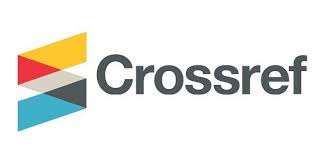Student Behavior in Using Artificial Intelligence for Canva Instant Presentation
DOI:
https://doi.org/10.26740/joaep.v4n2.p119-134Keywords:
Artificial intelligence, Canva, Student behaviorAbstract
This study aims to determine student behaviour in using artificial intelligence for Canva instant presentations. This study was conducted by students of the Office Administration Education study program, class of 2020, with a sample size of 250 from a population of 175 students determined using the Krejcie table with a significance level of 0.05. Data were analyzed using Structural Equation Modeling-Generalized Structured Component Analysis (SEM-GSCA) with the GSCA Pro application. The resulto f this study shows that perceived usefulness does not significantly influence attitude towards Canva. Perceived ease of use has a significant influence on attitude towards Canva. Innovativeness does not have a significant influence on attitude towards Canva. Perceived enjoyment has a significant influence on attitude towards Canva. Efficiency has a significant influence on attitude towards Canva. Attitude towards Canva has a significant influence on intention to use Canva. In conclusion, this study determines how AI in Canva instant presentations improves quality and efficiency and identifies factors influencing student behavior in its use.
Downloads
References
Aiolfi, S. (2023). How Shopping Habits Change With Artificial Intelligence: Smart Speakers’ Usage Intention. International Journal of Retail & Distribution Management, 51(9/10), 1288–1312. https://doi.org/10.1108/IJRDM-11-2022-0441
Alharbi, S., & Drew, S. (2014). Using The Technology Acceptance Model in Understanding Academics’ Behavioural Intention To Use Learning Management Systems.
Al-Rahimi, W. M., Othman, M. S., & Musa, M. A. (2013). Using TAM model to measure the use of social media for collaborative learning. International Journal of Engineering Trends and Technology (IJETT), 5(2), 90–95.
Anjani, D. W. A. N. , & N. G. A. (2019). Artificial Intelligence: Definisi, Sejarah, dan Aplikasinya dalam Dunia Industri. 73–80.
Boateng, H., Okoe, A. F., & Omane, A. B. (2016). Does Personal Innovativeness Moderate The Effect of Irritation on Consumers’ Attitudes Towards Mobile Advertising? Journal of Direct, Data and Digital Marketing Practice, 17, 201-210.
Bravo-Ureta, B. E., & António E, P. (1993). Efficientcy Analysis of Developing Country Agriculture: a Review Of The Frontier Function Literature. Agricultural and Resource Economics Review , 22(1), 88–101.
Carlos Martins Rodrigues Pinho, J., & Soares, A. M. (2011). Examining The Technology Acceptance Model in The Adoption of Social Networks. Journal of Research in Interactive Marketing, 5(2/3), 116–129. https://doi.org/10.1108/17505931111187767
Cheung, R., & Vogel, D. (2013a). Predicting User Acceptance of Collaborative Technologies: An Extension of The Technology Acceptance Model for E-learning. Computers & Education, 63, 160–175. https://doi.org/10.1016/j.compedu.2012.12.003
Davis, F. D. (1985). A Technology Acceptance model For Empirically Testing New End-User Information Systems: Theory And Results. [Thesis]. Massachusetts Institute Pf Technology.
Richard, W., & Turner, L. H. (2008). Pengantar Teori Komunikasi: Analisis dan Aplikasi. Jakarta: Penerbit Salemba Humanika.
Rodliyah, H., & Rosy, B. (2021). Keefektifan Pembelajaran Daring dalam Mata Pelajaran Kearsipan pada Siswa Kelas X Jurusan Otomatisasi dan Tata Kelola Perkantoran (OTKP). Journal of Office Administration: Education and Practice, 1(2), 94-107. https://doi.org/10.26740/joaep.v1n2.p94-107
Davis, F. D. (1989). Perceived Usefulness, Perceived Ease of Use, and User Acceptance of Information Technology. MIS Quarterly, 13(3), 319. https://doi.org/10.2307/249008
Elkaseh, A. M., Wong, K. W., & Che Fung, C. (2016). Perceived Ease of Use and Perceived Usefulness of Social Media for E-Learning in Libyan Higher Education: A Structural Equation Modeling Analysis. International Journal of Information and Education Technology, 6(3), 192.
Frimpong, K., Al-Shuridah, O., Wilson, A., & Sarpong, F. A.-A. (2017). Effect of Inherent Innovativeness and Consumer Readiness on Attitudes to Mobile Banking. 22, 187-201.
Huang, Y.-M. (2015). Exploring The Factors That Affect The Intention to Use Collaborative Technologies: The Differing Perspectives of Sequential/Global Learners. Australasian Journal of Educational Technology, 31(3). https://doi.org/10.14742/ajet.1868
Hwang, G.-J., Yin, C., & Chu, H.-C. (2019). The Era Of Flipped Learning: Promoting Active Learning And Higher Order Thinking With Innovative Flipped Learning Strategies And Supporting Systems. Interactive Learning Environments, 27(8), 991–994. https://doi.org/10.1080/10494820.2019.1667150
Irawati, T., Rimawati, E., & Pramesti, N. A. (2020). Penggunaan Metode Technology Acceptance Model (TAM) Dalam Analisis Sistem Informasi Alista (Application Of Logistic And Supply Telkom Akses). Is The Best Accounting Information Systems and Information Technology Business Enterprise This Is Link for OJS Us, 4(2), 106–120. https://doi.org/10.34010/aisthebest.v4i02.2257
Krejcie, R. V., & Morgan, D. W. (1970). Determining Sample Size for Research Activities. Educational and Psychological Measurement, 30(3), 607–610. https://doi.org/10.1177/001316447003000308
Labib, N. M., & Mostafa, R. H. A. (2015). Determinants of Social Networks Usage in Collaborative Learning: Evidence from Egypt. Procedia Computer Science, 65, 432–441. https://doi.org/10.1016/j.procs.2015.09.113
Leckie, G., & Goldstein, H. (2017). The Evolution Of School League Tables in England 1992–2016: ‘Contextual value‐added’, ‘expected progress’ and ‘progress 8.’ British Educational Research Journal, 43(2), 193–212. https://doi.org/10.1002/berj.3264
Leng, G. S., Lada, S., Muhammad, M. Z., Ibrahim, A. A. H. A., & Amboala, T. (2011). An Exploration of Social Networking Sites (SNS) Adoption in Malaysia Using Technology Acceptance Model (TAM), Theory of Planned Behavior (TPB) and Intrinsic Motivation. Journal of Internet Banking and Commerce , 16(2).
Ndubuisi, G., Otioma, C., Owusu, S., & Tetteh, G. K. (2022). ICTs Quality and Technical Efficientcy: An Empirical Analysis. Telecommunications Policy, 46(10), 102439. https://doi.org/10.1016/j.telpol.2022.102439
Rahman, N. S. A., Lina, H., Othman, M. S., Al-Rahmi, W. M., Kasim, S., & Sutikno, T. (2020). Social Media for Collaborative Learning." . International Journal of Electrical and Computer Engineering , 10(1).
Rahmasari, E. A., & Yogananti, F. A. (2021). Kajian Usability Aplikasi Canva (Studi Kasus Pengguna Mahasiswa Desain). Desain Komunikasi Visual & Multimedia, 7(1), 165–178.
Rahmi, M. (2022). Pengaruh Eektivitas, Efisiensi, Dan Kepuasan Penggunaan Terhadap Usability Aplikasi Sistem, Administrasi Perkantoran Elektronik Di Dinas Komunikasi Dan Informatika Kabupaten Pasaman Barat Provinsi Sumatera Barat. Jurnal Article.
Rais, M. (2015). Pengaruh Penggunaan Multimedia Presentasi Berbasis Prezi dan Gaya Belajar Terhadap Kemampuan Mengingat Konsep. Jurnal MEKOM (Media Komunikasi Pendidikan Kejuruan).
Santoso, B. (2010). Pengaruh perceived usefulness, perceived ease of use, dan perceived enjoyment terhadap penerimaan teknologi informasi (Studi Empiris di Kabupaten Sragen). Universitas Sebelas Maret.
Strydom, H. (2014). An Evaluation Of The Purproses Of Research In Social Work. Social Work/Maatskaplike Werk, 49(2). https://doi.org/10.15270/49-2-58
Sugiyono. (2018). Metode Penelitian Kuantitatif.
Teguh Iman Santoso, Muhammad Rozali, & Riri Hanifa. (2022). Structural Equation Modelling (SEM) Penggunaan SEM – GSCA dan Aplikasi GSCA – PRO Untuk Mahasiswa dan Dosen. NUSANTARA : Jurnal Pengabdian Kepada Masyarakat, 2(3), 48–56. https://doi.org/10.55606/nusantara.v2i3.253
Thakur, R., & Srivastava, M. (2014). Adoption Readiness, Personal Innovativeness, Perceived Risk and Usage Intention Across Customer Groups for Mobile Payment Services in India. Internet Research, 24(3), 369–392. https://doi.org/10.1108/IntR-12-2012-0244
Triatmaja, M. F. (2019). Dampak artificial intelligence (AI) pada profesi akuntan. Seminar Nasional dan The 6th Call For Syariah Paper (SANCALL) 2019.
Triwibowo, C., & Pusphandani, M. E. (2015). Pengantar dasar ilmu kesehatan masyarakat: untuk mahasiswa kesehatan masyarakat, keperawatan, dan kebidanan. Nuha Medika.
Tyas, E. I., & Darma, E. S. (2017). Pengaruh Perceived Usefulness, Perceived Ease of Use, Perceived Enjoyment, dan Actual Usage Terhadap Penerimaan Teknologi Informasi: Studi Empiris Pada Karyawan Bagian Akuntansi dan Keuangan Baitul Maal Wa Tamwil Wilayah Daerah Istimewa Yogyakarta. Reviu Akuntansi Dan Bisnis Indonesia, 1(1). https://doi.org/10.18196/rab.010103
Vardi, M. Y. (2012). Artificial Intelligence. Communications of the ACM, 55(1), 5–5. https://doi.org/10.1145/2063176.2063177
Wicaksana, H. P. (2021). Artificial Intelligence: Kecerdasan Buatan, Pengertian, dan Aplikasi. Jurnal Teknologi Informasi Dan Ilmu Komputer, 17–24.
Yadrovskaia, M., Porksheyan, M., Petrova, A., Dudukalova, D., & Bulygin, Y. (2023). About the attitude towards artificial intelligence technologies. E3S Web of Conferences, 376, 05025. https://doi.org/10.1051/e3sconf/202337605025
Zaharia, S., & Würfel, M. (2020). Voice commerce-studying the acceptance of smart speakers. Emerging Technologies and Future Applications, 449–454.
Downloads
Published
How to Cite
Issue
Section
 Abstract views: 277
,
Abstract views: 277
, PDF Downloads: 139
PDF Downloads: 139











